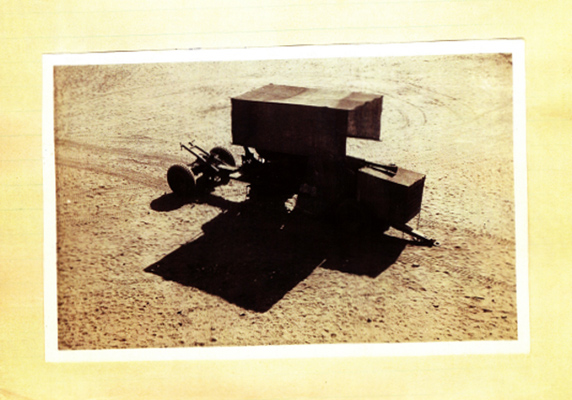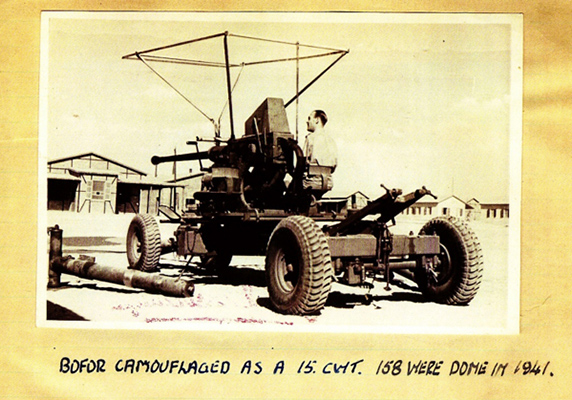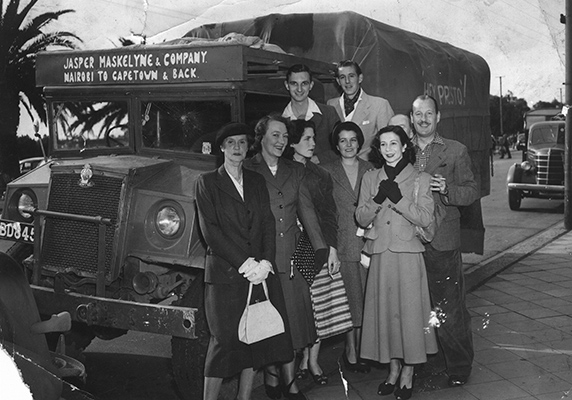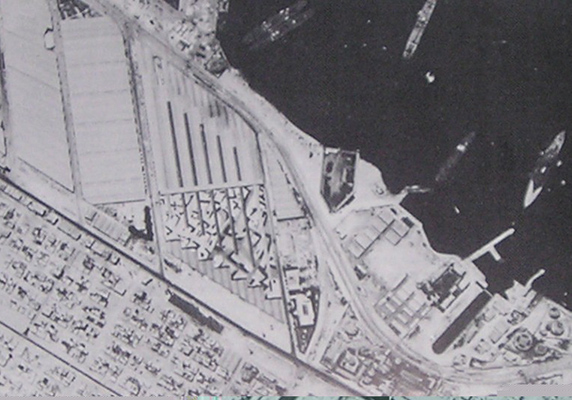Introduction
Jasper Maskelyne was, depending on who you ask, integral to the war effort or marginally successful at best.
Born into a family of established stage magicians in 1902, Jasper Maskelyne followed in his family's footsteps, carving out a fruitful career as a stage magician. Prior to World War II, Maskelyne was performing in London. One of his most famous tricks—“swallowing” a handful of razor blades without ill effect—had the crowds flocking to watch his act. When not swallowing sharp objects, he was also skilled in a range of tricks from sleight of hand, card and rope tricks, as well as supposed “telepathy”.
When the war broke out, which surely brought down Maskelyne's ticket sales, he began to wonder how to best utilize his considerable magical talents. Well, the front lines were not the best stage for picking pockets or chomping shaving implements, so Maskelyne decided the camouflage unit may have a place for him.
He campaigned hard at the War Office, jumping through hoops so he could do his part. However, his idea of using magic to help the war effort was not taken seriously. When coupled with his age at the time (37), he was certainly not the ideal candidate. The use of magic was seen as untired, untested, and, above all else, plain strange. But Maskelyne's persistence paid off in the end, and he was finally accepted into the Royal Engineers.
Back to School
The army packed Maskelyne off to a camouflage training school. However, now he had to face a whole new group of people who did not believe he had anything to offer, that magic was merely a trick. Because the creation and implementation of camo was executed from such a clinical standpoint—make this tank look like a bush—Maskelyne's desire to implement trickery and illusion were met with disdain.
Artillery disguised as a truck
=
Well, if his colleagues weren't listening to him, Maskelyne had to find a new audience. With an impending visit by an Inspector General, he decided to show off his talents by disguising a machinegun bunker. Supposedly, when the General arrived and toured the facility, a broom handle (taking the place of a machinegun) whacked the man on the legs. Impressed by Maskelyne's magic ingenuity, the Inspector General signed Maskelyne up for a tour of duty. His next stage would be in North Africa.
A disguised Bofor gun

Getting the Gang Together
Maskelyne arrived in Cairo, Egypt, in 1941, where he sought out a way to implement his talents. However, he was rebuffed again; the soldiers here believed his illusions were better used to entertain the troops rather than baffle the enemy.
Undeterred, Maskelyne negotiated so that in exchange for dazzling his comrades, he could form his own unit. The army dubbed this unit “The Camouflage Experimental Section”; Maskelyne, believing the name was not fabulous or intimidating enough, chose to name them “The Magic Gang”. Their mission? To sleight of back-hand the enemy.
But who was bad enough to join this gang?
Maskelyne interviewed over 400 prospective members, finding out which of them had a penchant for breaking the rules. In his group you'd find a cartoonist, electrical engineers, chemist, a carpenter, and much more. But months passed without the Magic Gang having a chance to eat a razorblade or make a tank vanish into thin air.
Jasper Maskelyne (far right) with his touring group in Nairobi

Soon, that all changed.
Dunes and Deception
German bombers had been attacking an important supply point in the Middle East. At a loss for what to do, the army, exhausted of options, called on the Magic Gang.
British warships had been sailing across the Mediterranean to Alexandria Harbor and came under fire from the German Luftwaffe. The Magic Gang's task was simple: make Alexandria harbor disappear.
A spy photograph of Alexandria bay, which came under fire from the German Luftwaffe

This was Maskelyne and, more importantly, the Magic Gang's chance for glory. The gang checked out the harbor, drawing on all of their trickery to figure out a solution. What Maskelyne and the gang decided was to fabricate a whole new harbor made from cardboard. This would serve as a decoy and draw the Luftwaffe's fire.
Hundreds of soldiers were employed to help build the dummy harbor a few miles away at Maryut Bay. The faux harbor was not designed at full size, but to appear as if it were from aircraft high in the sky. This form of trickery was created to harness the perspective of the pilots, utilizing shadows, ground lights, and explosive charges to appear as if the location was under siege.
When the next convoy of ships arrived, all the lights were turned off in Alexandria and turned on in Maryut. The decoy ships and lights were illuminated and the bombs were detonated to appear to other Luftwaffe pilots that the attack had begun.
The illusion was a success, drawing the pilots' fire on the first night, and then two more successive nights after that. This victory, for Maskelyne's gang and the man himself, cemented his ability and earned him a promotion. His technique demonstrated the use of decoy installations in the war effort. Utilizing light shadow and dummy structures were used to disguise other naval bases, too.
All an Illusion?
After Alexandria harbor, Maskelyne would supposedly go on to protect a vital supply route for the Allies at the Suez Canal by harnessing “Dazzle Lights”. These “Dazzle Lights” were a rotating structure of light constructed of mirrors and 24 powerful anti-aircraft searchlights. This brilliant show was said to have protected the Allies from being bombed and kept them safe…
However, much like Alexandria harbor, the light show at the Suez Canal has no real evidence backing the incidents. While Maskelyne's archives, plus official records, declassified intelligence reports, and added to experts and historians from the North African war, there is no definitive evidence to corroborate any of these claims.
Of him, Peter Forbes wrote:
“…either absolutely central (if you believe his account and that of his biographer) or very marginal (if you believe the official records and more recent research).”
So, we have to ask ourselves if Maskelyne's greatest trick was convincing the world that he did anything at all. What do you think?